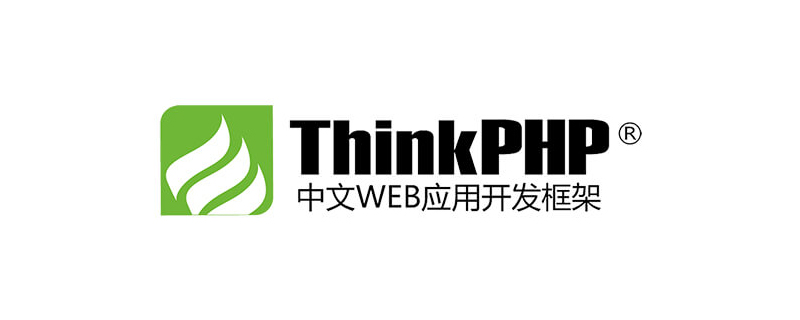The following tutorial column will introduce to you how to solve the thinkphp-queue problem. I hope it will be helpful to friends who need it! Used version: TP5.1, thinkphp-queue 2.0
mysql timeout disconnection problem
The queue task runs for a while Time, appears: SQLSTATE[HY000]: General error: 2006 MySQL server has gone away. Solution and analysis:
Configuration file
database.phpConfigure disconnection and reconnection:
// 是否需要断线重连 'break_reconnect' => true, // 断线标识字符串 'break_match_str' => ['2006'],
After configuration, although another configuration will appear in the log An error is reported: PDO::prepare(): send of 60 bytes failed with errno=32 Broken pipe, but it does not affect the program running results. Because after disconnection and reconnection, the program will throw an error: <pre class="brush:php;toolbar:false">...} catch (\PDOException $e) {
if ($this->isBreak($e)) {
return $this->close()->query($sql, $bind, $master, $pdo);
}
throw new PDOException($e, $this->config, $this->getLastsql());} catch (\Throwable $e) {
if ($this->isBreak($e)) {
return $this->close()->query($sql, $bind, $master, $pdo);
}
throw $e;} catch (\Exception $e) {
if ($this->isBreak($e)) {
return $this->close()->query($sql, $bind, $master, $pdo);
}
throw $e;}</pre>
How to monitor the process in the docker environment
Under normal circumstances, you can use supervisor to monitor the queue process. If used with docker, there are probably several options: 1. Install supervisor into the container where the php service is located
2. Run a new container to run queue tasks (no supervisor, container It is a daemon itself)
3. Run the queue task directly in the existing php container (use the –daemon option on the command line)
Method 1 supervisor reference configuration (put in /etc/supervisor/ conf.d, the file is named {file-name}.conf):
[program:my_queue_name]process_name=%(program_name)s_%(process_num)02d command=php /path/to/think queue:work --queue=your-queue-name --sleep=3 --daemon autostart=trueautorestart=truenumprocs=1user=root stopasgroup=truekillasgroup=trueredirect_stderr=truestdout_logfile=/path/to/your-queue.log
Method 2 Open a new mirror reference configuration (add services in docker-compose.yml):
php-queue: container_name: queue image: docker_php-fpm73 restart: always command: php path/to/think queue:work --sleep=3 volumes: - ../project:/var/www/html - ./conf/php:/usr/local/etc/php - ./conf/php/conf.d:/usr/local/etc/php/conf.d - ./conf/supervisor:/etc/supervisor/conf.d networks: - mysql - nginx
Method three is a bit hacky. In order not to change the online environment greatly, method three is finally used (operating on the host machine).
Start up:
docker exec -i php7 php /path/to/think queue:work --queue=my-queue-name --sleep=3 --daemonRestart: docker exec -i php7 php /path/to/think queue:restart (After restarting, the queue process is found to have disappeared), and then start again
View the queue process : ps -aux | grep queue
Sometimes the program goes wrong for some reason, and a large number of logs will be generated. It is best to adjust the log. Come out alone. Add at the beginning of the configuration file##Log adjustment
config/queue.php: use think\facade\Log;Log::init([
'single' => 'queue',
'file_size' => 1024 * 1024 * 10,
'level' => ['error'],]);
The log will be output to the queue-cli.log file# in the runtime
The above is the detailed content of About thinkphp-queue problem solving. For more information, please follow other related articles on the PHP Chinese website!
 thinkphp是不是国产框架Sep 26, 2022 pm 05:11 PM
thinkphp是不是国产框架Sep 26, 2022 pm 05:11 PMthinkphp是国产框架。ThinkPHP是一个快速、兼容而且简单的轻量级国产PHP开发框架,是为了简化企业级应用开发和敏捷WEB应用开发而诞生的。ThinkPHP从诞生以来一直秉承简洁实用的设计原则,在保持出色的性能和至简的代码的同时,也注重易用性。
 一起聊聊thinkphp6使用think-queue实现普通队列和延迟队列Apr 20, 2022 pm 01:07 PM
一起聊聊thinkphp6使用think-queue实现普通队列和延迟队列Apr 20, 2022 pm 01:07 PM本篇文章给大家带来了关于thinkphp的相关知识,其中主要介绍了关于使用think-queue来实现普通队列和延迟队列的相关内容,think-queue是thinkphp官方提供的一个消息队列服务,下面一起来看一下,希望对大家有帮助。
 thinkphp的mvc分别指什么Jun 21, 2022 am 11:11 AM
thinkphp的mvc分别指什么Jun 21, 2022 am 11:11 AMthinkphp基于的mvc分别是指:1、m是model的缩写,表示模型,用于数据处理;2、v是view的缩写,表示视图,由View类和模板文件组成;3、c是controller的缩写,表示控制器,用于逻辑处理。mvc设计模式是一种编程思想,是一种将应用程序的逻辑层和表现层进行分离的方法。
 实例详解thinkphp6使用jwt认证Jun 24, 2022 pm 12:57 PM
实例详解thinkphp6使用jwt认证Jun 24, 2022 pm 12:57 PM本篇文章给大家带来了关于thinkphp的相关知识,其中主要介绍了使用jwt认证的问题,下面一起来看一下,希望对大家有帮助。
 thinkphp扩展插件有哪些Jun 13, 2022 pm 05:45 PM
thinkphp扩展插件有哪些Jun 13, 2022 pm 05:45 PMthinkphp扩展有:1、think-migration,是一种数据库迁移工具;2、think-orm,是一种ORM类库扩展;3、think-oracle,是一种Oracle驱动扩展;4、think-mongo,一种MongoDb扩展;5、think-soar,一种SQL语句优化扩展;6、porter,一种数据库管理工具;7、tp-jwt-auth,一个jwt身份验证扩展包。
 thinkphp 怎么查询库是否存在Dec 05, 2022 am 09:40 AM
thinkphp 怎么查询库是否存在Dec 05, 2022 am 09:40 AMthinkphp查询库是否存在的方法:1、打开相应的tp文件;2、通过“ $isTable=db()->query('SHOW TABLES LIKE '."'".$data['table_name']."'");if($isTable){...}else{...}”方式验证表是否存在即可。
 一文教你ThinkPHP使用think-queue实现redis消息队列Jun 28, 2022 pm 03:33 PM
一文教你ThinkPHP使用think-queue实现redis消息队列Jun 28, 2022 pm 03:33 PM本篇文章给大家带来了关于ThinkPHP的相关知识,其中主要整理了使用think-queue实现redis消息队列的相关问题,下面一起来看一下,希望对大家有帮助。
 thinkphp3.2怎么关闭调试模式Apr 25, 2022 am 10:13 AM
thinkphp3.2怎么关闭调试模式Apr 25, 2022 am 10:13 AM在thinkphp3.2中,可以利用define关闭调试模式,该标签用于变量和常量的定义,将入口文件中定义调试模式设为FALSE即可,语法为“define('APP_DEBUG', false);”;开启调试模式将参数值设置为true即可。


Hot AI Tools

Undresser.AI Undress
AI-powered app for creating realistic nude photos

AI Clothes Remover
Online AI tool for removing clothes from photos.

Undress AI Tool
Undress images for free

Clothoff.io
AI clothes remover

AI Hentai Generator
Generate AI Hentai for free.

Hot Article

Hot Tools

DVWA
Damn Vulnerable Web App (DVWA) is a PHP/MySQL web application that is very vulnerable. Its main goals are to be an aid for security professionals to test their skills and tools in a legal environment, to help web developers better understand the process of securing web applications, and to help teachers/students teach/learn in a classroom environment Web application security. The goal of DVWA is to practice some of the most common web vulnerabilities through a simple and straightforward interface, with varying degrees of difficulty. Please note that this software

Atom editor mac version download
The most popular open source editor

Dreamweaver Mac version
Visual web development tools

PhpStorm Mac version
The latest (2018.2.1) professional PHP integrated development tool

SecLists
SecLists is the ultimate security tester's companion. It is a collection of various types of lists that are frequently used during security assessments, all in one place. SecLists helps make security testing more efficient and productive by conveniently providing all the lists a security tester might need. List types include usernames, passwords, URLs, fuzzing payloads, sensitive data patterns, web shells, and more. The tester can simply pull this repository onto a new test machine and he will have access to every type of list he needs.







